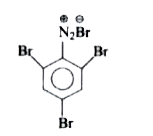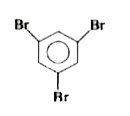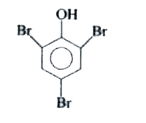The end product of oxidative phosphorylation is:
ATP+H2O
oxygen
ADP
NADH
The correct Answer is:A
Step-by-Step Solution:
1. Understanding Oxidative Phosphorylation:
- Oxidative phosphorylation is a crucial process in cellular respiration that occurs in the mitochondria. It involves the transfer of electrons through a series of proteins known as the electron transport chain.
2. Role of Oxygen:
- During oxidative phosphorylation, oxygen acts as the final electron acceptor. This means that oxygen is essential for the process, but it does not become an end product.
3. Formation of Water:
- As electrons are transferred to oxygen, they combine with protons (H+) to form water (H2O). Thus, water is one of the products of this process.
4. ATP Synthesis:
- The energy released during the electron transfer is used to pump protons across the mitochondrial membrane, creating a proton gradient. This gradient drives the synthesis of ATP from ADP (adenosine diphosphate) and inorganic phosphate (Pi) through the enzyme ATP synthase.
5. Identifying the End Products:
- The end products of oxidative phosphorylation are therefore ATP and water. While ADP is involved in the process, it is not an end product since it is converted into ATP.
6. Conclusion:
- The correct answer to the question is that the end products of oxidative phosphorylation are ATP and water (H2O).
Final Answer: The end product of oxidative phosphorylation is ATP plus H2O (adenosine triphosphate and water).
---
- Oxidative phosphorylation is a crucial process in cellular respiration that occurs in the mitochondria. It involves the transfer of electrons through a series of proteins known as the electron transport chain.
- During oxidative phosphorylation, oxygen acts as the final electron acceptor. This means that oxygen is essential for the process, but it does not become an end product.
- As electrons are transferred to oxygen, they combine with protons (H+) to form water (H2O). Thus, water is one of the products of this process.
- The energy released during the electron transfer is used to pump protons across the mitochondrial membrane, creating a proton gradient. This gradient drives the synthesis of ATP from ADP (adenosine diphosphate) and inorganic phosphate (Pi) through the enzyme ATP synthase.
- The end products of oxidative phosphorylation are therefore ATP and water. While ADP is involved in the process, it is not an end product since it is converted into ATP.
- The correct answer to the question is that the end products of oxidative phosphorylation are ATP and water (H2O).
Topper's Solved these Questions
- BOOK - ICSECHAPTER - RESPIRATION IN PLANTSEXERCISE - TEST YOUR PROGRESS ( OBJECTIVE TYPE QUESTIONS ) (Fill in the blanks with appropriate words.)8videos
RESPIRATION IN PLANTS
- BOOK - ICSECHAPTER - RESPIRATION IN PLANTSEXERCISE - TEST YOUR PROGRESS ( OBJECTIVE TYPE QUESTIONS ) (State whether the following statements are true or false .)22videos
RESPIRATION IN PLANTS
- BOOK - ICSECHAPTER - QUESTION PAPER -BIOLOGYEXERCISE - PART -II (Section -C)6videos
QUESTION PAPER -BIOLOGY
- BOOK - ICSECHAPTER - SAMPLE QUESTION PAPER 2 EXERCISE - PART-II SECTION - C6videos
SAMPLE QUESTION PAPER 2
Similar Questions
Knowledge Check
- Question 1 - Select One

The end product Y is :A B
B C
C D
D
Oxidative phosphorylation is done by
View SolutionWhat is oxidative phosphorylation?
View SolutionWhat is oxidative phosphorylation?
View SolutionWhat is oxidative phosphorylation?
View SolutionWhat is oxidative phosphorylation?
View SolutionOxidative phosphorylation refers to
View SolutionThe process of oxidative phosphorylation takes place in
View Solution


